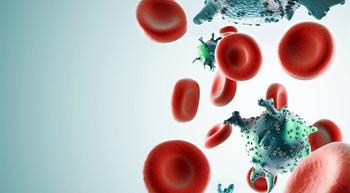
Can the Tan
Melanoma rates are on the rise, and is the most common form of cancer for young adults aged 25 to 29 years old.
In 2013, as part of its aggressive Moon Shot program to defeat melanoma, MD Anderson Cancer Center took its expertise out of the clinic and to the Texas state legislature. With concerted advocacy and expert testimony about the link between melanoma and ultraviolet (UV) radiation, Texas became only the fifth state to prohibit the use of tanning beds by minors. Now 10 states prohibit indoor tanning for those under 18, and another 12 ban it for those a bit younger, ranging in age from 14 to 17. In all, 41 states have some level of regulation governing the use of tanning facilities by children and adolescents.
Spurring the action is the growing consensus that melanoma rates are on the rise. Combing through six decades of data from Connecticut, researchers in 2013 found that the overall incidence rate of the disease rose more than 17-fold in men and more than nine-fold in women. Over the same period, mortality rates from the disease have more than tripled in men and doubled in women.
Worldwide, melanoma is among the cancer types whose incidence is most quickly increasing. Older men are particularly hard hit, but it is also the most common form of cancer for young adults 25-29 years old. For women in this age bracket, it is the leading cause of cancer death.
Tanning—both under the sun and in tanning booths—is considered the primary suspect. Exposure to UV radiation is responsible for 90 percent of squamous and basal cell carcinomas. Due to the complexity of the genetic damage in melanoma, it’s harder to precisely correlate UV and melanoma, but the impact is significant.
Evidence suggests that just one blistering sunburn sustained as a kid can more than double a person’s chance of later developing melanoma. And it doesn’t matter if the UV is solar or spa-based. A 2010 study of more than 2000 people conducted at the University of Minnesota found that those who frequent tanning beds are 75 percent more likely to develop melanoma than those who don’t. And the more time spent under the lights, the greater the risk. “Indoor tanning is not safe,” concluded DeAnn Lazovich, a cancer epidemiologist and the study’s lead author.
As with so many other diseases, prevention always beats treatment, whether someone is worried about a first experience with melanoma or a recurrence. Here’s a summary of precautions that can help protect against skin cancer:
> Limit your exposure to UV radiation, which penetrates light clouds and is reflected by water and other surfaces. Seek shade, especially when the sun is strongest, between 10 a.m. and 4 p.m.
> Wear dark, long-sleeved, tightly woven shirts, broad-rimmed hats and sunglasses.
> Every day, use sunscreen with an SPF of 15 or higher—the American Academy of Dermatology recommends an SPF of at least 30—and that protects against both UVA and UVB (broad spectrum). Apply 30 minutes before going out, and reapply every two hours or after exposure to water.
> Get in the habit of checking the local UV index when you check the weather. The higher the number, the more careful you should be. (0 is low and 10 is high—and the dial goes past 11.)
> There is no such thing as a “safe” tan. Never use tanning beds.
> Pay special attention to children. Newborns should be kept out of the sun; appropriate sunscreens can be used starting at 6 months of age.
> Examine your skin head-to-toe every month. Use a mirror or a partner to examine difficult-to-see areas, including genitals and buttocks. Look out for new skin growths or changes in your freckles, moles, bumps and birthmarks.
> Know your genetic risk. If several members on one side of the family have had melanoma, or if you or another family member has had more than one melanoma, or both melanoma and pancreatic cancer, you could have inherited a mutation that heightens your risk. Talk to a genetic counselor about what this means. There may be no benefit for testing, but there may be research in which you can participate.




